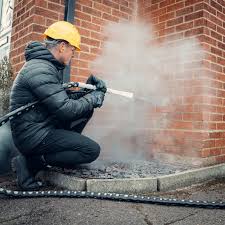
Key Factors to Consider Before Dry Ice Blasting Equipment
Introduction
In sectors like industrial, automotive, food processing, and aerospace, dry ice blasting has quickly emerged as one of the best non-abrasive cleaning techniques. However, it’s important to comprehend the essential elements that guarantee a safe, productive, and economical operation before making an investment in dry ice blasting equipment or using a service provider. You may avoid possible equipment damage, save money, and save time by making an informed choice.
Understanding Dry Ice Blasting
Dry ice blasting is the process of using compressed air to drive dry ice particles toward a surface at high speeds. When the dry ice hits, it sublimates, changing from a solid to a gas, which removes impurities without producing secondary waste. It is the perfect option for both delicate and demanding cleaning jobs because of its non-abrasive, non-conductive, and environmentally friendly qualities.
Top Factors to Consider Before Dry Ice Blasting Equipment
- Surface Material Compatibility
It’s crucial to determine whether the target surfaces can tolerate the operation before beginning any dry ice blasting project. Even while dry ice blasting is kinder than sandblasting, improper handling can still harm softer materials like painted surfaces, thin plastics, or delicate components. It is strongly advised to test on a tiny, concealed area.
- Type of Contaminants
Dry ice blasting reacts differently to different kinds of pollutants. Extremely hard coatings, such as epoxy or baked-on paints, may need more harsh treatment or additional cleaning techniques, but grease, oil, soot, adhesives, and biological residues are easily removed. The proper blasting settings and procedure can be chosen with the help of the pollutants’ nature.
- Equipment Specifications
Choosing the correct dry ice blasting machine is critical. Key specifications to evaluate include:
- Air Pressure Capacity: Higher pressure (above 100 psi) is often needed for industrial cleaning.
- Pellet Size: Larger pellets offer aggressive cleaning, while microparticles are better for delicate jobs.
- Hose and Nozzle Design: Lightweight, ergonomic designs improve operator efficiency.
Always select equipment that matches your specific application needs, not just the general capacity.
- Air Supply Requirements
Strong and reliable pressurized air is essential for dry ice blasting equipment. An industrial-grade air compressor that can deliver enough cubic feet per minute (CFM) at the necessary pressure is what you’ll need. Poor cleaning results from an inadequate air supply, which can also cause downtime.
- Dry Ice Quality and Storage
Despite the best circumstances, dry ice sublimates rapidly. Dry ice pellets of superior quality should be dense, firm, and recently produced. Additionally, to reduce sublimation loss, appropriate storage in well-insulated containers is essential. Organizing your dry ice supply and storage plan in advance guarantees that you will have adequate supplies on hand when needed.
- Workplace Environment and Safety
Blasting dry ice produces CO₂ gas, which can displace oxygen in confined spaces. Therefore:
- Ventilation: Ensure proper airflow to prevent CO₂ buildup.
- Protective Equipment: Operators should wear gloves, safety glasses, and hearing protection.
- Training: Only trained personnel should handle blasting equipment to avoid accidents or equipment damage.
- Waste Management and Cleanup
One of the benefits of dry ice blasting is that it leaves no secondary waste. However, the contaminants being removed—grease, paint chips, mold spores—still need to be collected and disposed of. Setting up appropriate containment measures ahead of time can simplify post-blasting cleanup.
- Project Cost and Return on Investment
Purchasing dry ice blasting equipment is a significant investment. Costs vary based on machine type, size, and capabilities. Additional expenses include dry ice supply, air compressor needs, operator training, and maintenance. For occasional use, renting equipment or outsourcing to professional services might offer better value.
- Regulatory Compliance
Depending on your industry, there may be environmental, safety, or operational regulations that impact dry ice blasting projects. Always verify compliance with local, state, or industry-specific regulations before starting a cleaning operation.
- Vendor Support and Maintenance
Choose equipment suppliers who offer strong after-sales support, including:
- Training programs for your team
- Spare parts availability
- Technical support when troubleshooting issues
Reliable support minimizes downtime and extends the life of your equipment.
Common Mistakes to Avoid
- Underestimating air compressor needs: Many setups fail due to low airflow.
- Using low-quality dry ice: Poor dry ice means ineffective cleaning.
- Skipping safety measures: Proper PPE and ventilation are non-negotiable.
- Ignoring surface testing: Always test before full-scale blasting to avoid damage.
Conclusion
It takes careful planning and comprehension to start a project using dry ice blasting equipment or to invest in it. Successful cleaning procedures depend heavily on critical elements such as surface compatibility, equipment requirements, air supply, dry ice quality, and operator safety. By taking these factors into account in advance, you may safeguard your money, personnel, and equipment while also optimizing performance.
Dry ice blasting is a wise choice for businesses looking to uphold the highest operational standards in the current competitive climate since it can result in safer operations, cheaper expenses, and longer-lasting equipment.